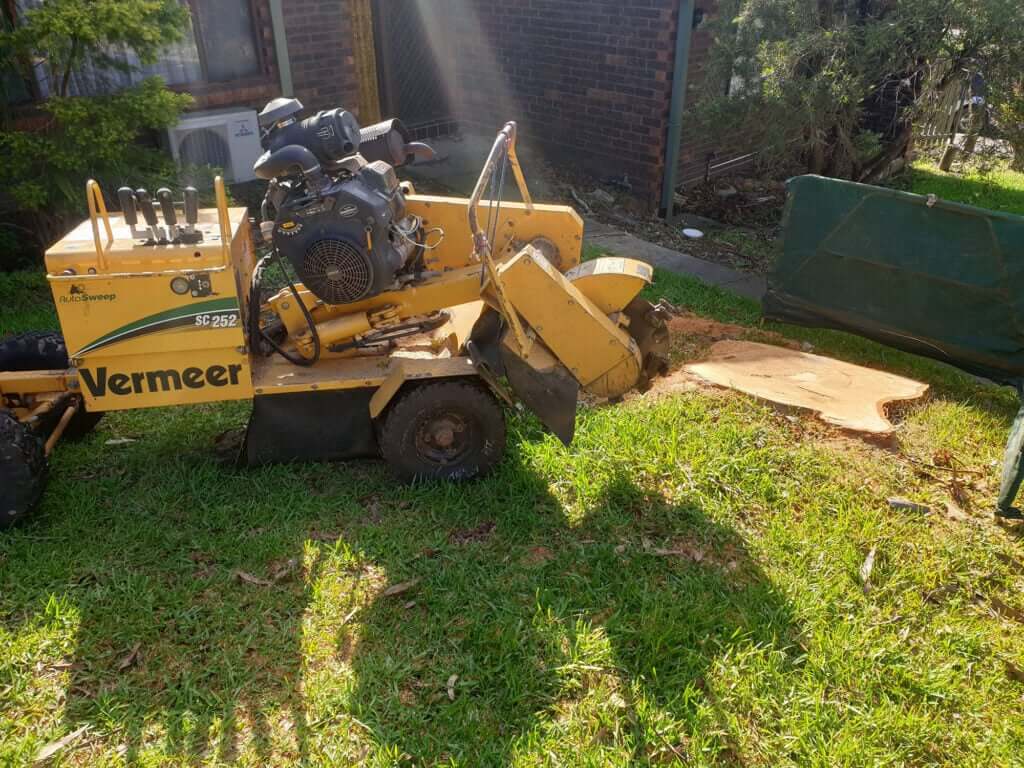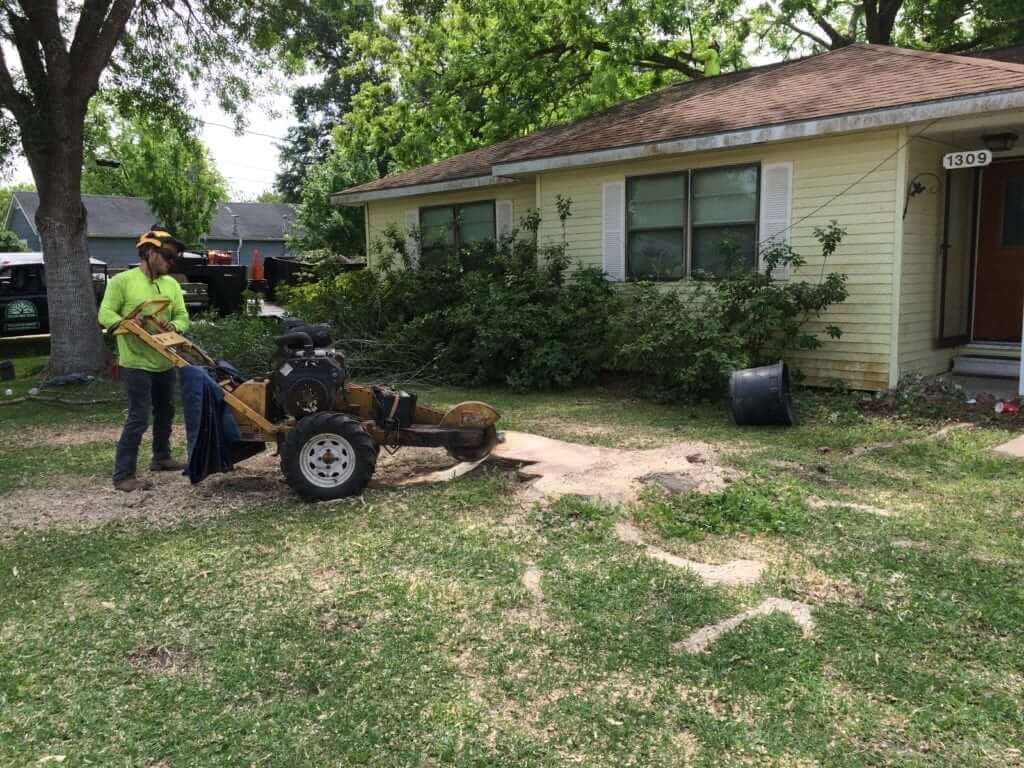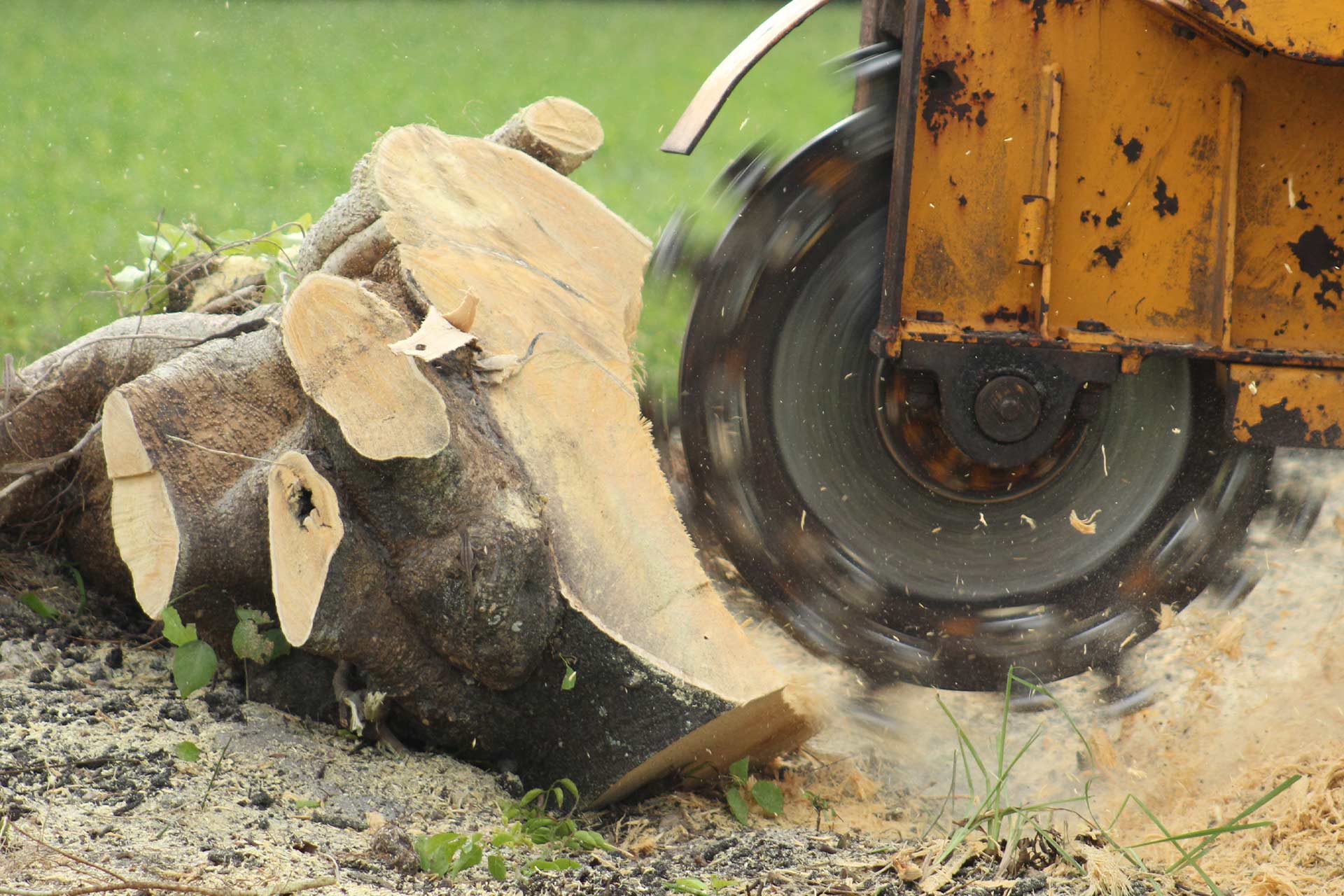Grinding tree stumps may seem like a daunting task, but with the right tools and knowledge, it can be a straightforward and efficient process. Whether you want to remove a stump for aesthetic purposes or to make way for new landscaping, this step-by-step guide will walk you through the process. By following these steps and taking the necessary safety precautions, you’ll be able to successfully grind tree stumps on your property.
Understanding the Basics of Tree Stump Grinding
Why is grinding necessary? When a tree is cut down, the stump is typically left behind. While it may be tempting to leave the stump as it is, there are several reasons why grinding it is a better option. Stumps can be unsightly and take up valuable space in your yard. They can also serve as a breeding ground for pests or regrow into new trees. Grinding the stump eliminates these issues and allows you to reclaim your yard.
Moreover, by grind tree stumps, you are not just enhancing the aesthetics of your yard but also promoting the overall health of your landscape. The decaying stump can attract fungi and diseases that may spread to other plants in your garden. Removing the stump through grinding prevents these potential risks and creates a healthier environment for your remaining trees and plants to thrive.
Why is Grinding Necessary?
Grinding a tree stump is necessary to completely remove it from your yard. By grinding the stump, the roots are severed, preventing any regrowth. Additionally, the ground-up stump can be easily disposed of or used as mulch elsewhere in your garden.
Furthermore, the process of grinding a tree stump is environmentally friendly as it eliminates the need for harsh chemicals that are often used to kill stumps. By choosing grinding over chemical solutions, you are opting for a more sustainable approach to landscaping that minimizes harm to the ecosystem. Click here to get what to expect essential land clearing services near me.
Safety Precautions Before You Begin
Before you start grinding a tree stump, it’s important to take safety precautions to protect yourself and others. First, ensure that you have the appropriate protective gear, including safety glasses, earplugs, gloves, and sturdy footwear. These items will shield you from flying debris and loud noises. It’s also crucial to inspect the area around the stump for any hazards, such as rocks, wires, or pipes, that could interfere with the grinding process. Clearing the area of these obstacles will make the task safer and more straightforward.
Moreover, it is advisable to familiarize yourself with the operation of the stump grinder before starting the task. Understanding how the equipment works and its safety features will help you operate it efficiently and minimize the risk of accidents. Additionally, marking the location of any underground utilities, such as gas lines or electrical cables, is essential to avoid damaging them during the grinding process. Taking these precautions ensures a smooth and safe stump grinding experience. You can visit https://www.safeworkaustralia.gov.au/doc/guide-managing-risks-tree-work for guide to managing the risks of tree work.
Tools and Equipment Needed for Stump Grinding
Choosing the right stump grinder is essential to get the job done efficiently. Depending on the size of the stumps you need to remove, you may opt for a smaller handheld grinder or a larger, self-propelled grinder. Consider the size and accessibility of the stumps on your property when selecting the appropriate tool for the task.
Stump grinding is a meticulous process that requires precision and the right equipment. In addition to the grinder itself, you may need a shovel to clear debris around the stump, a mattock for digging out rocks and roots, and a chainsaw to trim any overhanging branches that could interfere with the grinding process. Having a wheelbarrow or tarp nearby can also help with transporting the wood chips and stump remnants once the grinding is complete.
Protective Gear for Safe Grinding
While the stump grinder does the heavy lifting, it’s crucial to prioritize your safety. Wear goggles or safety glasses to protect your eyes from wood chips and debris. Earplugs or earmuffs will help shield your ears from the noise generated by the grinder. Sturdy gloves and boots are necessary to protect your hands and feet from potential injuries.
Furthermore, it is advisable to wear long sleeves and pants to prevent any contact with flying wood chips or debris. A hard hat can provide additional protection from falling branches or objects dislodged during the grinding process. It’s essential to be fully equipped with the right protective gear to ensure a safe and successful stump grinding operation.

Preparing the Area for Stump Grinding
Before you start grinding the stump, it’s important to prepare the surrounding area to ensure a smooth and efficient process.
Stump grinding is a crucial step in removing a tree stump from your property, but proper preparation can make the task easier and safer.
Clearing the Surrounding Area
Remove any objects or debris from around the stump that could interfere with the grinder or cause injury. This includes rocks, logs, or even garden ornaments. Clearing the area will facilitate easy access and maneuvering for the grinder.
Additionally, consider trimming any overhanging branches or foliage that may obstruct the stump grinding process. This will create a clear path for the grinder and reduce the risk of accidents during operation.
Checking for Hidden Obstacles
Before starting the grinding process, carefully inspect the surrounding area for any hidden obstacles or underground utilities. These may include irrigation lines, electrical cables, or gas pipes. Use a utility locator or consult with a professional if you’re unsure about the location of any utilities. It’s crucial to avoid damaging any underground infrastructure during the stump grinding process.
Furthermore, be mindful of any tree roots that may extend beyond the stump area. These roots can be tough to spot but can cause damage to equipment if not identified and addressed before grinding commences.
The Step-by-Step Stump Grinding Process
With the area prepared and the necessary safety precautions in place, it’s time to begin the stump grinding process.
Stump grinding is a crucial step in the process of removing a tree stump from your property. Not only does it eliminate the unsightly stump, but it also helps prevent potential hazards such as tripping or attracting pests. By following the proper techniques and safety measures, you can effectively grind a stump and reclaim your outdoor space.
Positioning the Grinder
Place the stump grinder near the stump, ensuring that it is stable and secure. The grinder should be level, and the cutting wheel should be positioned just above the stump. Consult the manufacturer’s instructions for specific guidelines on operating the grinder.
It’s essential to wear appropriate safety gear, including goggles, ear protection, and gloves, while operating a stump grinder. Additionally, make sure there are no bystanders near the work area to avoid any potential accidents. Safety should always be the top priority when undertaking any tree maintenance task.

Grinding the Stump
Slowly and carefully lower the cutting wheel onto the stump, allowing the grinder to chew through the wood. Move the grinder back and forth across the stump to ensure even grinding. Take breaks as needed to prevent the grinder’s engine from overheating.
As the stump grinding process progresses, you will begin to see the stump gradually turn into wood chips and mulch. This material can be repurposed as organic matter for your garden beds or compost pile, providing a sustainable solution to waste disposal. By recycling the remnants of the stump, you can contribute to a greener environment and enhance the fertility of your soil.
Cleaning Up After Grinding
Once the stump has been ground down, there are a few final steps to complete the process.
Disposing of Tree Stump Remains
Clear the area of any remaining wood chips or debris. You can dispose of the ground-up stump in various ways, depending on your preferences. Some options include composting it, using it as mulch in other areas of your garden, or arranging for its removal by a waste management service.
Composting the ground-up stump can be a sustainable option, as it allows the organic material to break down naturally and enrich the soil over time. This process not only helps reduce waste but also contributes to the health of your garden by providing valuable nutrients to your plants.
If you choose to use the stump as mulch, spread it around your garden beds to help retain moisture, suppress weed growth, and regulate soil temperature. This natural mulch can enhance the aesthetics of your garden while benefiting the overall health of your plants.
Restoring the Ground Surface
After the stump has been removed, you may notice an uneven surface in the area. Fill any depressions with soil and level it out with a rake. To restore the area to its previous state, consider planting grass seed or laying new sod. This will ensure that your yard looks its best after the stump grinding process.
Planting grass seed or laying new sod not only improves the appearance of your yard but also helps prevent soil erosion and promotes a healthy lawn. By restoring the ground surface after stump removal, you create a seamless and visually appealing landscape that enhances the overall curb appeal of your property.
Grinding tree stumps can be a challenging task, but by following these step-by-step instructions and taking the necessary safety precautions, you’ll be able to successfully remove stumps from your yard. Remember to choose the right tools and equipment, prepare the area beforehand, and clean up after grinding to achieve the best results. With these guidelines in mind, you’ll be well-equipped to tackle the task of grinding tree stumps and reclaim your yard with ease.

